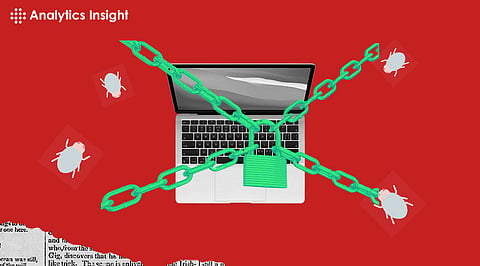

Ransomware has emerged as one of the most pervasive and damaging cyber threats in recent years. This malicious software encrypts victims' data, rendering it inaccessible until a ransom is paid. With its roots tracing back to the late 1980s, ransomware has evolved significantly, leveraging advanced techniques and targeting a broad spectrum of victims. Let’s explore the current trends in ransomware attacks, the tactics employed by cybercriminals, and effective mitigation strategies.
Ransomware first appeared in 1989 with the "AIDS Trojan," which demanded $189 to be sent to a post office box in Panama. The simplistic nature of this attack set the stage for more sophisticated methods. Over the decades, ransomware has evolved from basic encryption techniques to advanced methods that utilize strong cryptography and complex distribution mitigation strategies.
Double Extortion: Modern ransomware attacks often involve not just encrypting data but also stealing it. Cybercriminals then threaten to release the stolen data publicly if the ransom is not paid, adding an additional layer of pressure on the victims.
Targeted Attacks: Instead of indiscriminate attacks, cybercriminals are increasingly focusing on high-value targets, such as large corporations, healthcare institutions, and critical infrastructure. These entities are more likely to pay higher ransoms to restore their services quickly.
Ransomware-as-a-Service (RaaS): This trend involves developers offering ransomware kits for sale or lease to other criminals, democratizing access to sophisticated attack tools. This has lowered the entry barrier for cybercriminals and increased the frequency of attacks.
Cryptocurrency Demands: The rise of cryptocurrencies has facilitated the anonymity of ransom payments, making it harder for law enforcement to trace transactions.
Phishing Emails: A common entry point, phishing emails trick recipients into clicking malicious links or downloading infected attachments. These emails often impersonate trusted entities to lower the guard of the targets.
Exploiting Vulnerabilities: Cybercriminals exploit known vulnerabilities in software and hardware, particularly those for which patches have not been applied. This includes exploiting weak Remote Desktop Protocol (RDP) configurations and unpatched software.
Once inside a network, ransomware operators use tools like Mimikatz to extract credentials and move laterally across the network. They often seek to gain administrative privileges to maximize the impact of the attack.
Living off the Land (LotL) Techniques: These involve using legitimate tools and processes available within the victim's environment to avoid detection. Examples include using PowerShell scripts and Windows Management Instrumentation (WMI).
Modern ransomware encrypts data and exfiltrates sensitive information. This serves a dual purpose: it allows criminals to demand ransom for decrypting the data and not disclosing the stolen information.
Sophisticated Encryption Methods: Ransomware now employs strong encryption algorithms such as AES (Advanced Encryption Standard) combined with RSA (Rivest-Shamir-Adleman) to encrypt the encryption keys themselves, making it extremely difficult to decrypt the data without the corresponding private key.
Regular Software Updates and Patch Management: Keeping systems and software updated with the latest patches is crucial in preventing the exploitation of vulnerabilities.
Employee Training and Awareness: Regular training programs to educate employees about the risks of phishing and social engineering attacks can significantly reduce the likelihood of initial compromise.
Network Segmentation: Implementing network segmentation can limit the spread of ransomware within an organization, containing the damage to a smaller segment of the network.
Intrusion Detection Systems (IDS) and Intrusion Prevention Systems (IPS): Deploying IDS and IPS can help detect and block suspicious activities in real-time.
Endpoint Detection and Response (EDR) Solutions: EDR tools monitor endpoints for malicious activities and provide insights into the tactics and techniques used by attackers.
Regular Security Audits and Penetration Testing: Conducting regular security assessments can identify and rectify potential weaknesses before they are exploited.
Incident Response Plan: Having a well-defined incident response plan is critical. This plan should include steps for containment, eradication, and recovery.
Backup and Recovery: Regularly backing up critical data and ensuring that backups are stored securely offline can mitigate the impact of a ransomware attack. These backups should be tested periodically to ensure they can be restored effectively.
Engaging with Law Enforcement: Reporting ransomware attacks to law enforcement can help in tracking down and prosecuting cybercriminals. Additionally, collaboration with law enforcement agencies can provide insights and support during an incident.
Zero Trust Architecture: Implementing a zero-trust security model, which assumes that threats could be both inside and outside the network, can enhance security by strictly verifying each request as though it originates from an open network.
Cyber Insurance: Cyber insurance can help mitigate the financial impact of a ransomware attack. Policies often cover costs related to data recovery, system restoration, and even ransom payments under certain conditions.
Ransomware attacks continue to pose significant threats to organizations worldwide. The evolving nature of these attacks, characterized by sophisticated tactics and targeted approaches, requires a comprehensive and dynamic defense strategy. By understanding the trends and tactics employed by cybercriminals and implementing robust prevention, detection, and response measures, organizations can mitigate the risks and impact of ransomware attacks. As the cyber threat landscape continues to evolve, staying informed and prepared is essential for safeguarding valuable digital assets.
Join our WhatsApp Channel to get the latest news, exclusives and videos on WhatsApp
_____________
Disclaimer: Analytics Insight does not provide financial advice or guidance on cryptocurrencies and stocks. Also note that the cryptocurrencies mentioned/listed on the website could potentially be scams, i.e. designed to induce you to invest financial resources that may be lost forever and not be recoverable once investments are made. This article is provided for informational purposes and does not constitute investment advice. You are responsible for conducting your own research (DYOR) before making any investments. Read more about the financial risks involved here.
